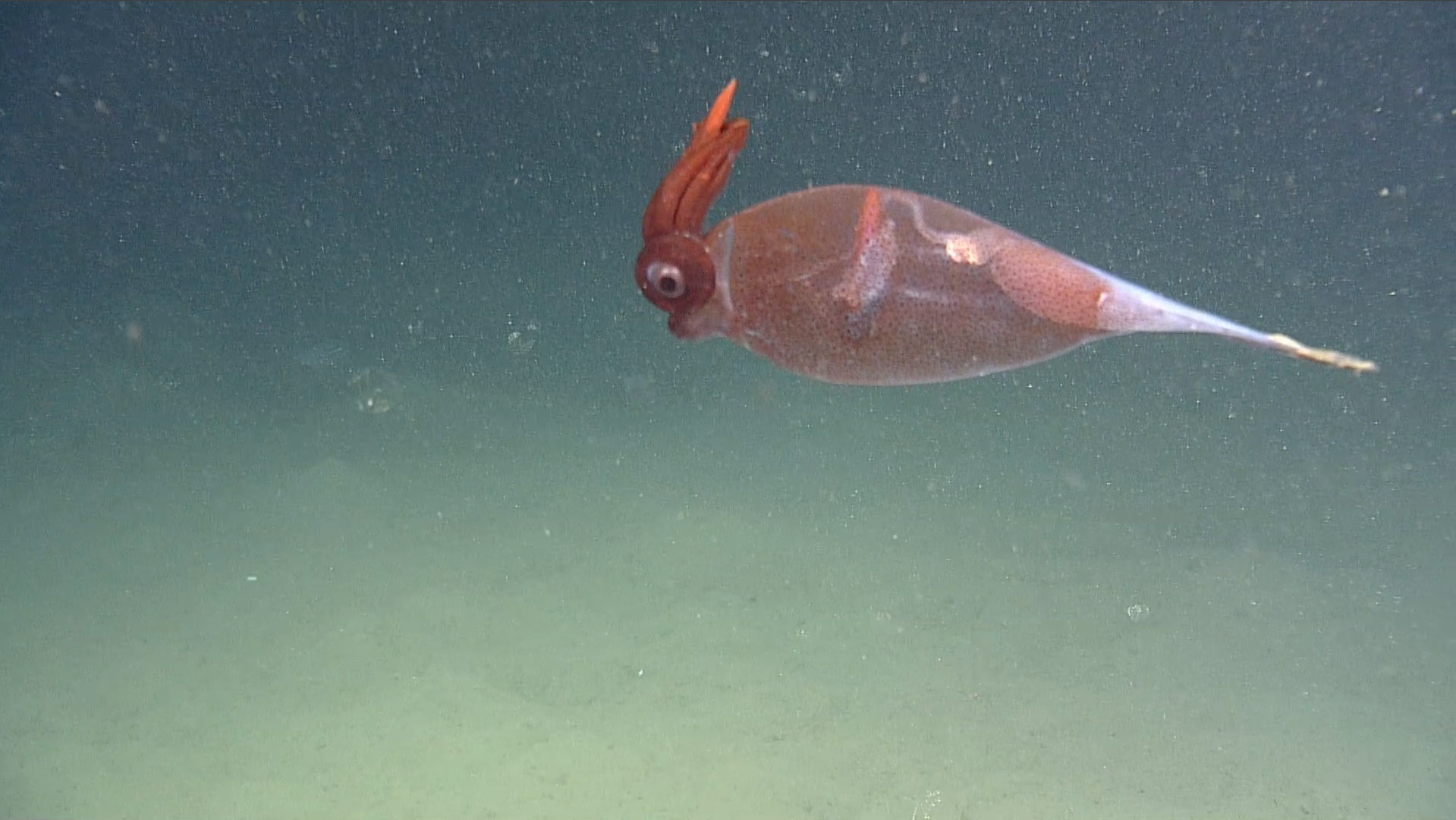Image Archive





























Close up of a cockatoo squid (likely Taonius borealis) at 585 m water depth at the Oregon Offshore site, turning transparent as the lights of the ROV shown on its body. Credit: UW/NSF-OOI/CSSF; V14.

Salp Chain

Sea Pig at Axial

Kyle Cropped

Juliet cropped

Morrigan cropped

Paige cropped

John Cropped

VIctoria Cropped

The fantail of the R/V Thompson "filled" nearly to the brim with cabled infrastructure during the Cabled Array VISIONS'15 cruise. Credit: Mitch Elend, University of Washington, V15.

Leaving Esquimalt after sunset. Credit: Erin Haphey, UW; V15.

Erin watching the horizon with her camera ready. Credit: Malea Saul, UW; V15.

Students enjoying shoretime in Victoria, BC (CW from bottom left: Erin, Kearstin, Lauren, Emily, Malea). Credit: Erin Haphey, UW; V15.

Setting sun casts an evening glow on ship. Credit: Erin Haphey, UW; V15.

ROPOS emerges from the water towing the Deep Profiler crawler beneath it. Credit: Erin Haphey, UW; V15.

Erica and Malea use a scraper to clean a recovered hydrophone frame and, maybe, sample some marine life. Credit: Mitch Elend, UW; V15.

R/V Thompson crewmember Sue is always willing to lend a hand on the deck. Credit: Mitch Elend, UW; V15.

Bob is still doing oxygens the old school way. Credit: Mitch Elend, UW; V15.

Ode to the Blue Moon- Oh Blue Moon, how you glimmer and shine, your reflection whirls with each passing wave. Credit: Malea Saul, UW; V15.

Malea has nominated Lauren for President and is already working on her campaign. Credit: Malea Saul, UW; V15.

View of the bridge near the entrance to Newport while heading out for the start of Leg 3. Credit: Mitch Elend, UW; V15.

A trawl-resistant Benthic Experiment Package is latched under ROPOS and ready for deployment at the EA Shelf (60 m) Site. Credit: Mitch Elend, UW; V15.

Trina (APL-UW) does final preparation and checkout of a SAMI-pH sensor before the Platform Interface Controller is deployed. Credit: Mitch Elend (UW);V15.

Kent Fletcher (OSU) uses a power washer to clean external surface of a trawl-resistant Benthic Experiment Package recovered from the EA Shelf (60 m) Site. Credit, Mitch Elend, UW; V15.

Katie and I enjoying each other's company. Credit: Cole Rogers, Western Washington University; V15.

A floc of seabirds admire the R/V Thompson on a remarkably calm day in the NE Pacific. Credit: Mitch Elend, University of Washington, V15.

The HPIES instrument awaits deployment on the aft deck of the R/V Thompson during Leg 2 of the VISIONS'15 cruise. Credit: Alex Jamsedi, Western Washington University; V15.

Blue water in the Northeast Pacific. Credit: Joe Kalisch, Grays Harbor College; V15.
- Anemone
- Animal
- Arthropod
- ASHES
- Axial
- Axial Base
- Axial Biology
- Axial Caldera
- Bacteria
- Basalt Lava
- BEP
- Biofouling
- biolgoy
- Biology
- Camds
- Camera
- Camhd
- Central Caldera
- Ciliates
- Cnidaria
- Coastal Biology
- Crab
- Deep Profiler Mooring
- Dive Highlights
- Eastern Caldera
- Echinoderms
- Endurance Array
- Engineering Team
- ENLIGHTEN 10
- Exploratorium
- Fish
- Geology
- HD Camera
- HPIES
- Hydrate Ridge
- Hydrates
- Hydrophone
- Hydrothermal Vents
- Illustration
- Inshore 80 Meters
- Instrument
- International District
- J-BOX
- Jason
- Jellyfish
- Junction Box
- K12
- Lava
- Mollusk
- Moorings
- Nodes
- Nudibranch
- Octopus
- OOI
- Oregon Offshore
- Oregon Offshore 600 m
- Oregon Shelf
- Oregon Slope Base
- People
- PN1B
- PN1D
- Polychaetes
- PPSDN
- Primary Node
- RASFL
- ROCLS
- ROPOS
- ROPOS Dives
- ROV Team
- RV Revelle
- RV Sikuliaq
- RV Thompson
- Salp
- Sample
- SC13
- Science Team
- Sea Cucumber
- Sea Star
- Sea Urchin
- Seafloor
- Seismometer
- Sensors
- Shallow Profiler Mooring
- Shark
- Shipboard
- Shore Station
- Slope Base
- Smoker
- Soft Coral
- Southern Hydrate Ridge
- Sponge
- Squid
- Students
- Students & Guest Participants
- Tmpsf
- Tubeworms
- VISIONS 11 Leg 1
- VISIONS 11 Leg 2
- VISIONS 11 Viewers
- VISIONS 13
- VISIONS 14
- VISIONS 15
- VISIONS 16
- VISIONS 17
- VISIONS 18
- VISIONS 20
- VISIONS 22
- VISIONS 23
- Visualization
